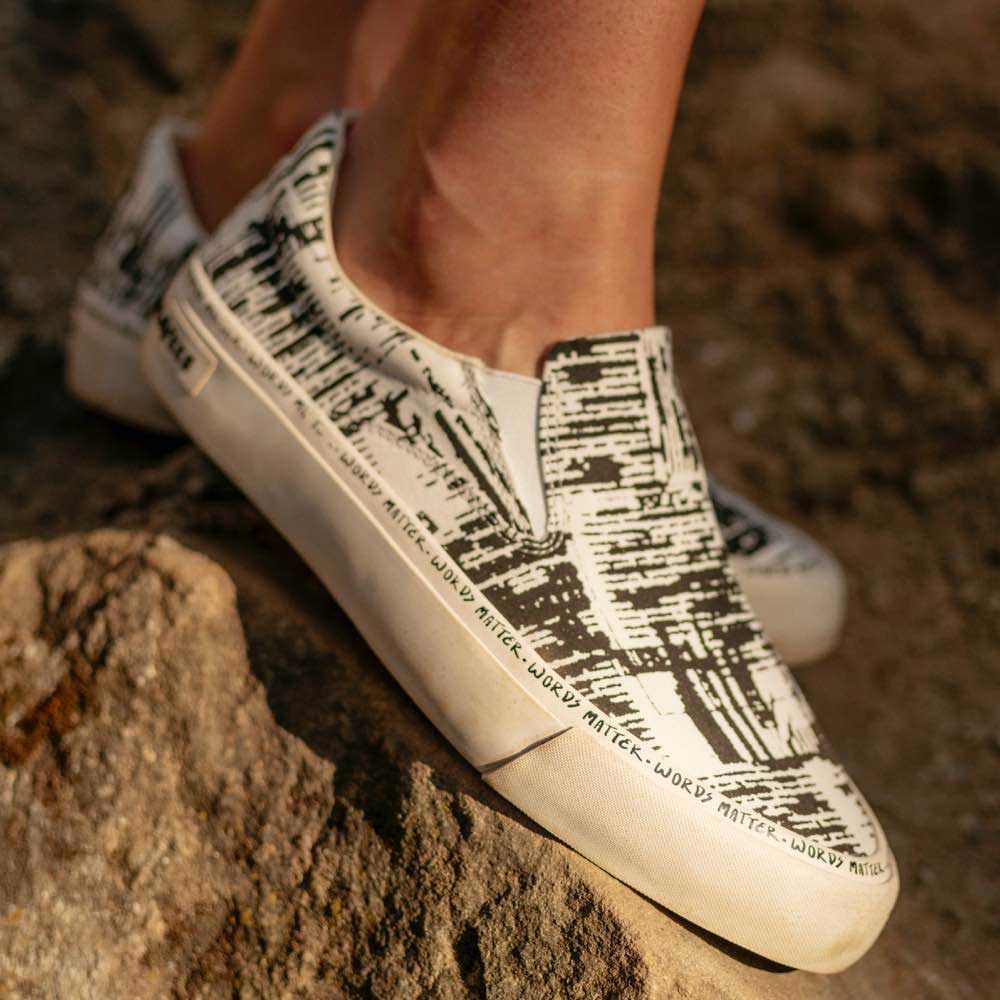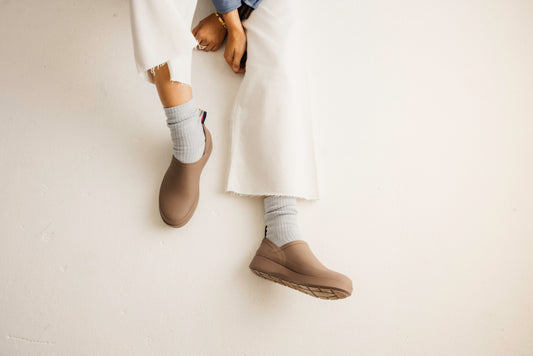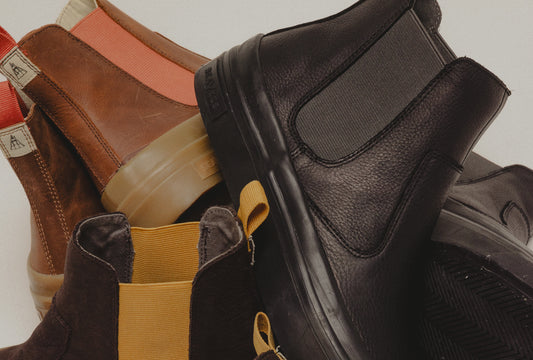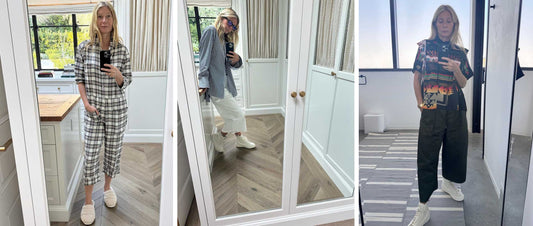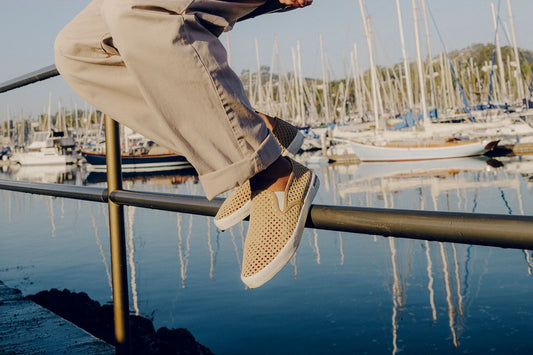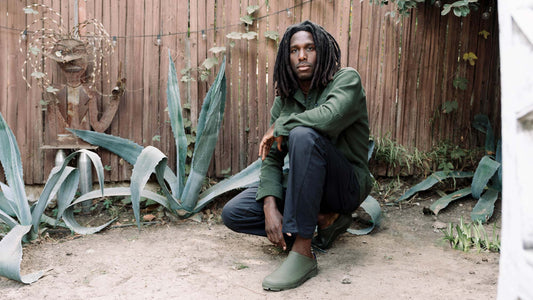Collaborations
Words Matter Hawthorne
It’s just a fact. The words you choose, the stories you tell, the information you share - it matters. It shapes others’ opinions. It affects others’ decisions. This is the foundation upon which the Words Matter Hawthorne was designed - to serve as a reminder that what you say and what you write matters. The truth matters.
While this is true for everyone, it is more important still for those who’s job it is to bridge the gap between current events, history, and public opinion. Our focus for this shoe is on the work of journalists.
In a time where information is passed around so freely and easily, we wanted to make a statement as a brand about where we stand when it comes to seeking out and protecting journalists who value truth and integrity over agendas and popularity.

This is a shoe with a story, rooted in the design of the shoe itself. The Words Matter Collection is a collaboration between local artist DJ Javier and SeaVees. The black and white graphic printed on our classic Hawthorne slip-on silhouette was inspired by redacted government documents - highlighting the importance of saying what we mean and meaning what we say. The addition of the words, “WORDS MATTER” printed on the foxing of the shoe makes our point clear. A casual slip-on with a serious message, the Words Matter Hawthorne is available in both men’s and women’s sizes.
For every pair sold from this collection, we will be donating 5% to our partner, the Committee to Protect Journalists (CPJ), an independent, nonprofit organization that promotes press freedom worldwide. They defend the right of journalists to report news safely and without fear of reprisal. Their work is incredibly important, and needed now more than ever. We are seeing firsthand how dangerous journalism can be, and want to contribute however we can to ensure the protection of journalists and the truth they seek out. To further understand why the work they do is so important, we asked Dr. Courtney Radsch, CPJ Advocacy Director, a few questions:
1. How have some of the most volatile current events such as the upcoming election, BLM movement and Coronavirus affected the way you view your mission and the role of your non-profit?
It is an incredibly challenging time to be a journalist, whether you’re working in the United States or globally, and we have had to step up to support journalists who are covering historic protests amid a global pandemic, often in the midst of the election. This is the case in the United States, but also in Hong Kong, Belarus, and other countries.
The coronavirus pandemic poses serious safety issues for reporters, particularly freelancers, so we have been providing regularly updated safety guidance in over 30 languages. But it’s not only the pandemic, it’s the response by governments that has led to a “COVID crackdown”, as the pandemic is used as a cover to censor critical reporting. This has included passing “fake news” laws and criminalizing independent journalism (especially when it is at odds with the official version of coronavirus response), arrests, internet shutdowns and other restrictions on access, to name just a few tactics. For journalists jailed for their reporting, the pandemic adds an added layer of danger, with prisons particularly vulnerable to outbreaks. That’s why CPJ’s #FreeThePress campaign is demanding the release of all imprisoned journalists around the world.
Meanwhile, historic protests against police brutality in the United States were met with unprecedented violence by law enforcement, who arrested and targeted journalists covering them. The U.S. Press Freedom Tracker, which CPJ helped found, is investigating more than 800 anti-press incidents related to the protests. And we recently launched the U.S. Press Freedom Accountability Project to fund local reporting on press freedom violations and accountability in relation to coverage of protests against police violence.
Finally, as the election draws closer, we are mobilizing to ensure that reporters know we have their back. We have a U.S. election safety kit for reporters.
2. Journalism has changed a lot over the last 10 years, what do you consider a journalist today? And where do you draw the line as far as who the CPJ extends its protection to?
At CPJ we consider anyone engaged in an “act of journalism” to be a journalist, so anyone who faces obstruction or reprisal in commenting on or covering the news could qualify as a case for us. As technology has revolutionized the way we consume information, it’s also broken down barriers to entry for journalists. Some of the most powerful journalism you’ll find is happening on social media and at the community-level. While it’s amazing to have greater diversity in voices, many of these journalists aren’t working with the support or backing of a traditional newsroom, which also makes them more vulnerable to threats. That’s why CPJ Emergencies provides free resources to help journalists stay safe, ensuring that people can feel prepared when taking on an assignment, even with limited resources.
3. How can citizens in the US support press freedom in their everyday lives?
One easy way is to make sure your voice is heard! Freedom of expression is a right enshrined in the U.S. Constitution, and it’s important that Americans speak out on issues important to them. People interested in supporting press freedom can follow CPJ on social media, or participate in our campaigns like #FreeThePress and #MissingNotForgotten, which focuses on journalists imprisoned and missing around the world. Our goal is not just to raise awareness of journalists under threat, but to also demand that those in power vocally and unequivocally stand for press freedom. To that end, people in the U.S. interested in supporting press freedom should make sure their elected officials know press freedom is something they care about and an issue on which they want to see the U.S. be a leader--both at home and abroad.
4. What are the biggest threats to press freedom in today’s environment?
Globally we have seen a rise in anti-press rhetoric from world leaders, and that comes with frightening consequences for journalists. Unfortunately, in authoritarian and democractic countries alike, leaders have a disturbing number of tools on hand they can use to censor the press. Imprisonment continues to be a problem, with 248 journalists behind bars in 2019, the majority on anti-state charges, like supporting terrorism. We’ve also seen a bump over time in the number of journalists charged under “fake news” laws, with 30 cases in 2020. For comparison, there was only one journalist imprisoned under the same charges in 2012.
Journalists continue to be a target for murder, especially those reporting on politics and corruption. Since 1992, we have documented 881 journalists murdered in connection to their work. In nearly nine out of ten of these cases, the perpetrators go free.
Online threats and harassment have become endemic to contemporary journalism. And threats online also translate to physical threats, not to mention the toll they take on an individual’s well-being. Female journalists are disproportionately targeted with online harassment. In a 2019 survey of female and nonbinary journalists in the U.S. and Canada, 90% of American, and 70% of Canadian journalists identified online harassment as the biggest threat they faced.
5. How would you rate the US in comparison to other countries on quality and accuracy of journalism as well as freedom to report without repercussion?
Historically the U.S. was seen as a champion of press freedom. But the constant attacks on journalists as “fake news” have reverberated around the world, and the recent attacks on journalists covering the Black Lives Matters protests have further eroded that leadership. The surveillance and targeting of journalists is also a concern. CPJ has reported on the press freedom records of both the Obama and Trump administrations, and the targeting of journalists crossing U.S. borders.
In 2017, we helped found a database to systematically track press freedom threats in the U.S. called the U.S.Press Freedom Tracker. The website has documented an array of aggression including arrests, attacks, legal subpoenas, verbal threats, and equipment searches and seizures by law enforcement.
In particular, 2020 has been a very dangerous year for journalists in the U.S., especially for those covering anti-police violence protests. Since the George Floyd protests started in May, over 800 press freedom violations have been reported to the tracker, and well over half of physical assaults on journalists at protests were at the hands of law enforcement.
There has never been a more important time to make this statement. We hope you make the statement with us.

